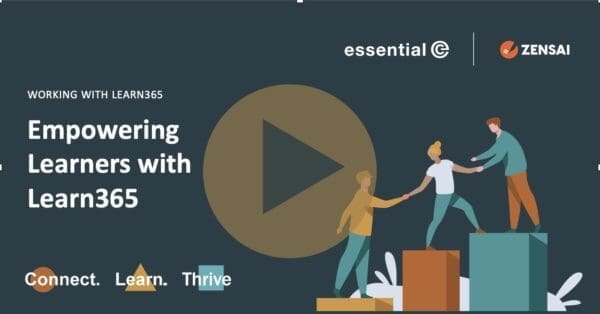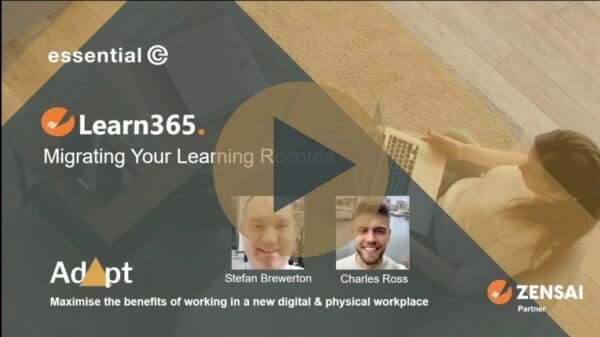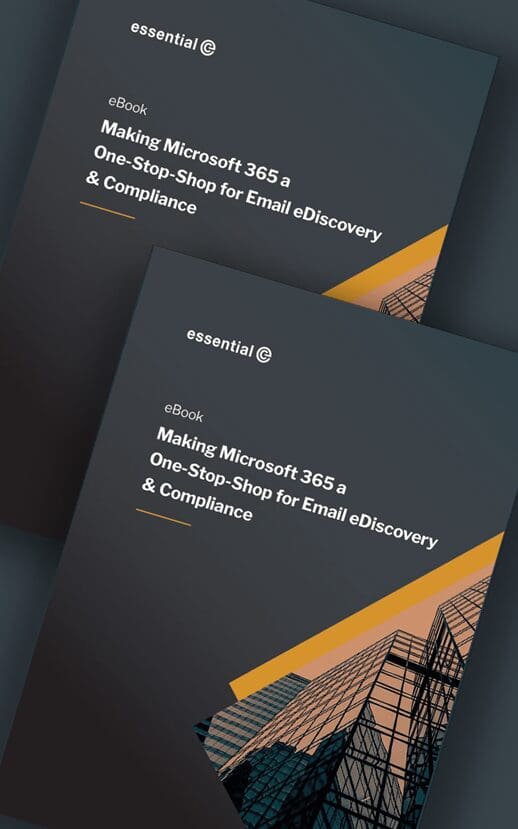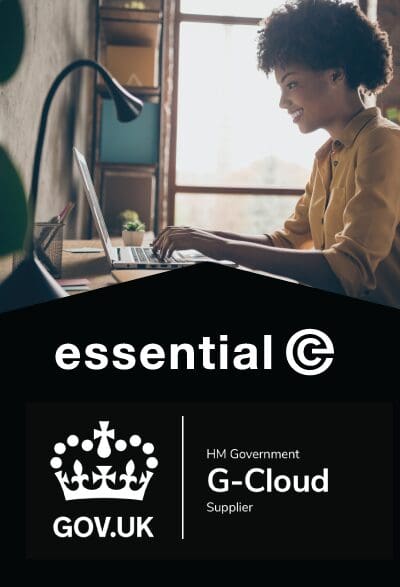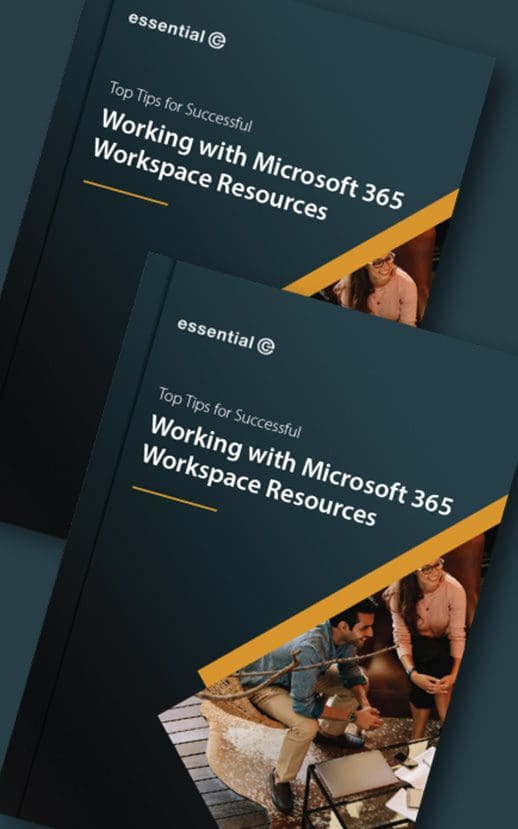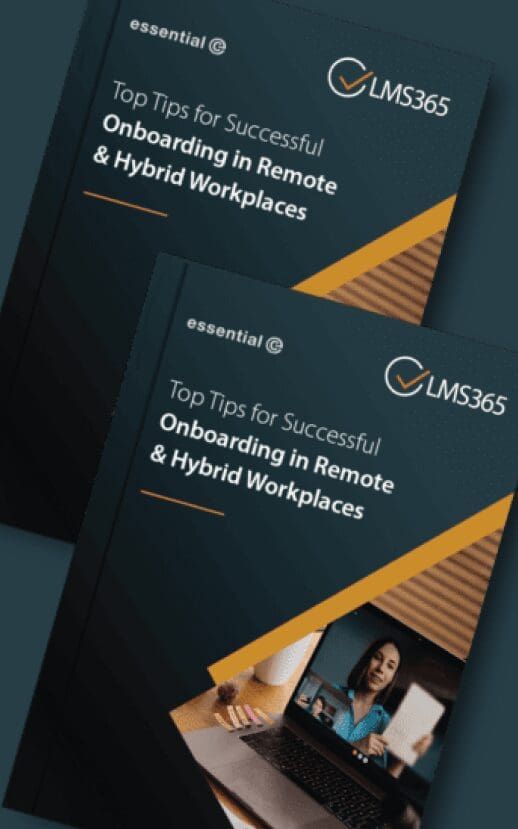Learning Management
LMS Implementation Checklist: 9 Key Ingredients for Success
The learning and training carried out in any organisation is often complex and varied, ranging from mandatory training for compliance reasons to e-learning around softer skills, and all shades in between.
Most organisations use a Learning Management System (LMS) that helps to unify the experience for learners and provide different capabilities such as the ability to search through courses, register onto a course and see their training record.
An LMS is also often critical for managing learning at scale, with admins able to allocate courses to the right groups, track success through analytics, create specific learning pathways and more.
Launching an LMS can be complex, involve a lot of moving parts and can cross a lot of functions.
Here at Essential we’ve been involved in many LMS implementation projects as a partner of a leading LMS vendor, and we have a structured and proven implementation plan we follow with all our customers.
The truth is that no two LMS projects are quite the same, but here are some common ingredients that, over the years, we’ve found to be important for a successful roll-out:
How to implement a successful LMS
In this article we’ve put our heads together and come with up an LMS Implementation Checklist covering nine key ingredients that will set you up for LMS success.
1. Get the all the relevant stakeholders onboard & happy to co-operate
Any LMS implementation strategy and accompanying plan will need to involve a number of different stakeholders and experts to cover various bases:
- Your core L&D team to guide the whole implementation from a learning point of view.
- Your IT function to cover areas such as technical requirements, security and more.
- Your HR function to ensure alignment with your people strategy, processes such as employee onboarding, and potentially HR and LMS integration to help synchronise learner groups.
- Marketing or brand specialists to provide guidance on the look and feel, along with imagery resources for your training catalogues and content.
- Specialist teams such as frontline support who may have a particular focus on learning and training.
- Other specialists to ensure areas such as accessibility.
Getting all the relevant stakeholders onboard early can really ‘oil the wheels’ of your LMS project.
For example, ensuring that your IT department is confident in the technology being implemented, especially when addressing questions related to permissions, security, support, including integration with existing systems such as training room booking, can help prevent issues down the line.
Your chosen LMS provider should ideally be able to fill in gaps and/or act as a go-between with your various internal stakeholders, removing any barriers to a smooth implementation.
2. Plan your migration of any legacy learning content and/or LMS
If you’ve previously implemented an LMS or have in-house content, a key consideration in your LMS implementation will be your LMS data migration, be it migrating any existing course material (e.g. SCORM) and user training records.
This provides for a smooth transition from one LMS to another and ensures you have a sufficient volume of course material at launch to support adoption.
Typically, any LMS migration project plan will need to cover:
- Any existing courses
- Any SCORM files that need importing
- Any user training records
- Additional learner data such as existing certifications
- Any clean ups, such as unwanted courses.
The complexity associated with the LMS data migration can vary dramatically. From years of supporting LMS integrations we know that no two projects are the same.
Ideally your partner should be able to guide you through the requisite migration steps.
3. Ensure all relevant parties receive training
As part of your LMS implementation project plan, certain groups will need to be trained in how to administer and manage the LMS. Doing this at an early enough stage will enable and empower them to set up the LMS and add content ready for launch.
Having targeted training that is tailored to the individual needs of different roles and groups ensures it is relevant and engaging. In projects we’ve worked on, we’ve delivered training tailored to the needs of:
- Technical resources and IT teams.
- Central learning teams more likely to be responsible for the overall management and admin of the LMS
- Subject matter experts and business teams administering specific courses.
4. Consider your LMS ‘brand’
User experience (UX) is critical for your LMS implementation to drive engagement, effectiveness and adoption. In terms of LMS UX, most teams focus on the learner experience.
How you brand your LMS is key. Aligning the look and feel with your brand identity shows that it is ‘official’, encouraging both learners but also those adding course material. Some also choose to give their LMS a name to give it some personality, or to tie-in with an existing learning initiative.
For example, the ‘Look and Feel’ workshop we run with our clients has consistently proved popular, covering everything from the right colour scheme, to having strong visibility for training subject icons to sourcing on-brand imagery,
Another critical consideration of the LMS user experience is accessibility. An LMS should be accessible to support commitments to diversity and inclusion and ensure everybody has access to learning opportunities. Details such as accessible colour contrasts, clear fonts, alternative text for images, and compatibility with screen readers and other assistive technologies are all in the mix.
5. Integrate with core business platforms
Integrating an LMS with other applications to make it easier for people to access your LMS can be a key factor in driving adoption.
For example, you may want to establish links to your learning portal on your existing company intranet, aligning certain training options with departmental sites.
You may also want to tie in with your HR system of record, ERP system (e.g. Dynamics 365), or with Microsoft 365 and Microsoft Entra ID (formerly Active Directory) groups in order to easily target courses and learning pathways to different roles, groups and career paths.
The value of LMS integration is most clear when it is seamlessly accessible for users. This can be a company intranet but it should also be embedded with other core ‘day to day’ applications.
For example, we implement Zensai’s Learn365 solution and it can be accessed through Microsoft Teams, via SharePoint, mobile devices and more – all with SSO. Being more directly in the daily flow of work and having a familiar interface significantly increases usage.
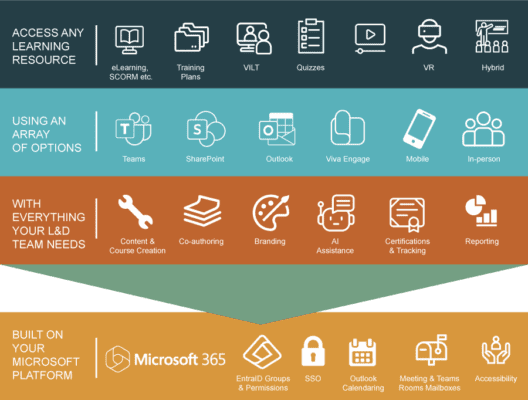
6. Have a solid plan for your LMS launch and promotions
A key component of any LMS implementation plan is your accompanying communication and change plan. LMS adoption is never a given and you will have to promote awareness and encourage usage.
Any LMS adoption strategy needs to focus on the communications and change interventions not only surrounding launch but also in the post-launch period. It can cover not only messaging, but also how support is organised, endorsement from leadership, networks of local champions and more.
Beyond your launch, your plans should also include plans for keeping your training fresh and compelling. This may include regular updates on training news.
7. Track your LMS adoption rate and success
A key reason to implement an LMS is the ability to track and analyse learner progress and also report on compliance-related training. During the implementation it helps to define your LMS reporting and analytics strategy by talking to key stakeholders about their needs. Once defined, you can then set up your LMS data analytics and individual reports accordingly.
Ideally your solution should include good LMS reporting features including some good out-of-the-box reports, but there may also be opportunities to customise your analytics.
For example, Learn365’s integration with Microsoft 365 means you can use Power BI to meet more bespoke reporting needs.
8. Establish ongoing LMS support channels
Even if your LMS implementation project goes smoothly, there will always be a few unexpected issues which need to be resolved quickly or questions which need to be answered. You’ll also get additional ideas that you may want to implement.
Having a knowledgeable and responsive partner to do the heavy lifting on these can make a real difference. Similarly your team should know who to call and how best to escalate any issues.
For example, the Essential LMS support package includes:
- Having named contacts to work with and who understand their organisation, needs and environment
- Having deep product knowledge as well as related expertise such as Microsoft 365
- A structured and tailored support package that interfaces with support from the LMS vendor (in this case, Zensai)
- Being highly responsive – not only swiftly dealing with issues that arise, but also in being proactive in anticipating challenges, making suggestions and more.
- A customer success representative who has regular check-ins with our clients to ensure everything is running smoothly and identify opportunities for improvement.
- A quarterly LMS customer user group that provides a forum where customers can share ideas, best practices, and feedback, learning from the experiences of peers.
9. Explore opportunities for continuous improvement
Much of the value of an LMS may happen after the actual implementation. This happens because:
- An initial launch may have a restricted scope due to practical considerations, with further changes planned down the line.
- Learning teams may want to see what’s working and what’s not from the initial launch, and then introduce changes based on these.
- Sometimes deeper and more extensive changes are better to introduce once adoption has grown
- The needs of an organisation and their learners will evolve and grow.
Here, having a feature-rich product and a capable partner can help expand your learning capabilities.
For example, the solution Essential works with – Learn365 from Zensai – is part of a range of learning and development solutions including performance management, employee engagement and training targeted to frontline workers.
We are also leveraging our wider expertise in the Microsoft platform to deliver value-add, examples of which include:
- Offering learning to an external audience and optionally charge for learning.
- Linking learning achievement with automatic salary/remuneration changes.
- Automatically licencing users for applications following completion of related training.
Need help with your LMS implementation? Get in touch!
Every LMS implementation is different. In this checklist we’ve covered some of the key ingredients that drive a successful launch and underpin long-term value and success. Having a strong relationship with the right LMS partner helps drive support during and after the project.
A great way to experience the LMS support you’re going to receive from a potential partner is to run a pilot. Of course, this allows you to experience your chosen LMS too.
If you’d like to discuss your LMS implementation or to setting up an LMS pilot, then get in touch!
Learning Management Solutions built on Microsoft 365
Allow our experts to help guide you to select the best LMS for your enterprise




